Game of Thrones’ season five finale shook up the game in a big way.
The field of contenders for the Iron Throne has been whittled down, and fan favorite Jon Snow’s (Kit Harington) watch has ended. The series is known for major shakeups, from Eddard Stark’s (Sean Bean) death in season one to last year’s finale murder of Tywin (Charles Dance). Sunday’s finale leaves the field of contenders in more disarray than ever — and presents many key questions for season six.
Who is still competing for the throne?
Stannis (Stephen Dillane) is dead. Daenerys (Emilia Clarke) is captured and effectively sidelined for the time being.
That leaves Roose (Michael McElhatton) and Ramsay Bolton (Iwan Rheon) as frontrunners. They have just won a great victory over Stannis, the latest victory in the sadistic father-son duo’s rise. The Lannisters remain power, but with Cersei (Lena Headey) on trial and Tommen (Dean-Charles Chapman) a green boy-king on the throne, things are not looking good for them. They’ve also lost their princess Myrcella (Nell Tiger Free) and will have to deal with the fallout from that tragedy, which could potentially spark war with Dorne. Things have never looked worse for the Lannisters.
There’s also the Tyrells. While members of the younger generation Margaery (Natalie Dormer) and Loras (Finn Jones) are imprisoned, savvy grandmother Olenna (Diana Rigg) has formed an alliance with Littlefinger (Aidan Gillen), who helped her get Cersei imprisoned. The wealthy Tyrells, whose homeland, High Garden, is already providing King’s Landing with most of its food, makes them popular among the people. They could make a legitimate run for the Iron Throne.
See The Real-Life People Who Inspired Game of Thrones Characters
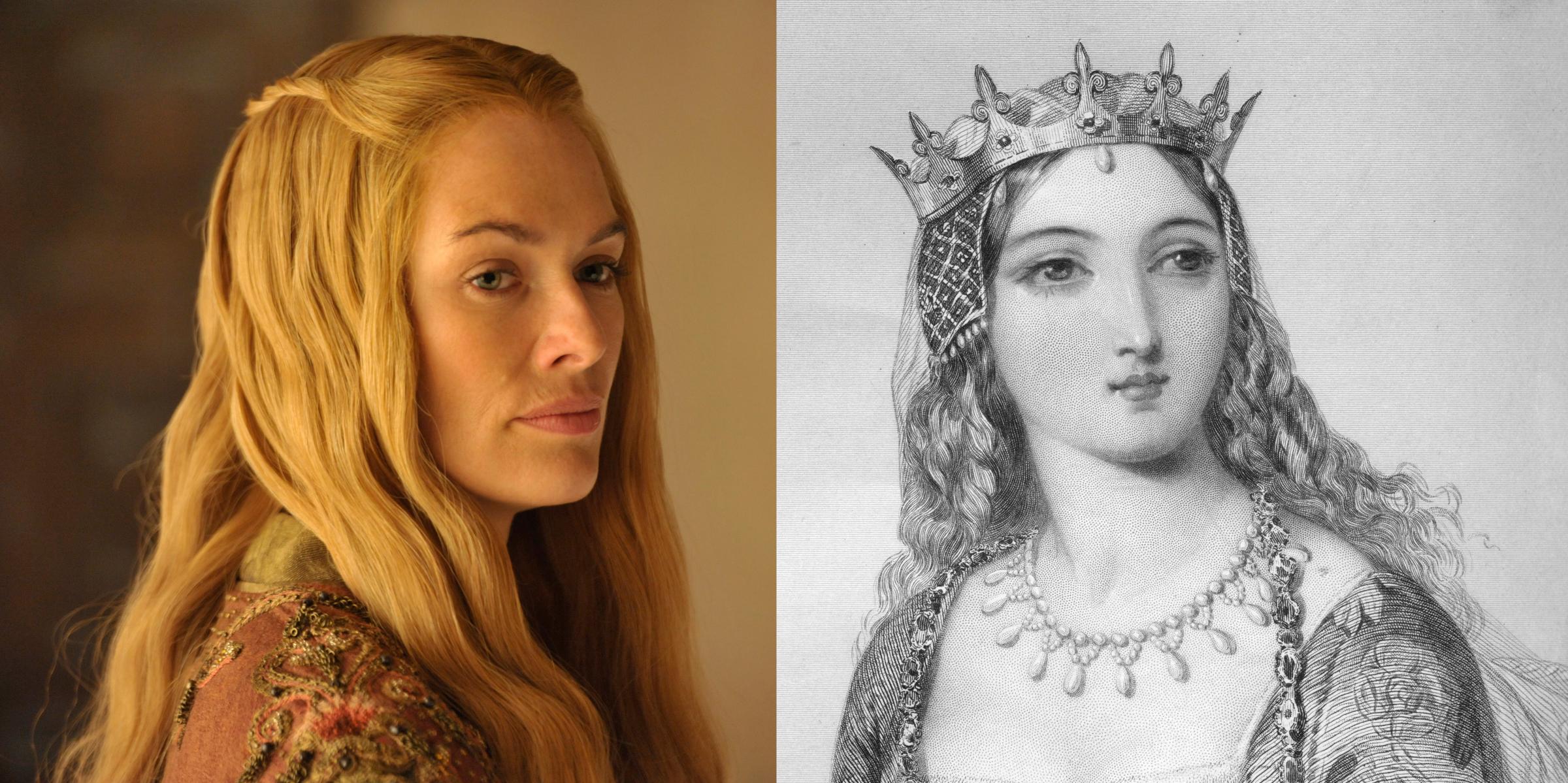
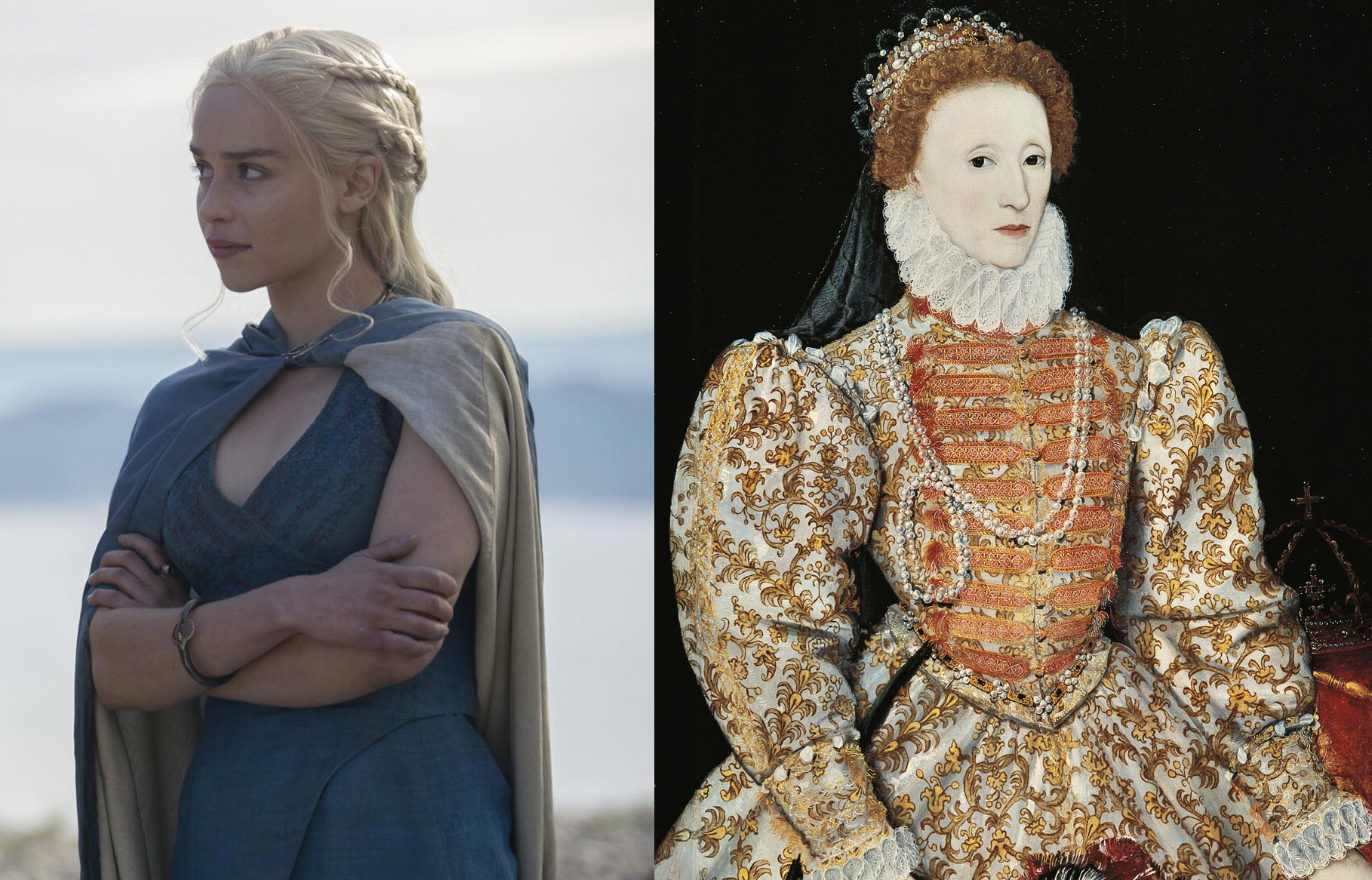
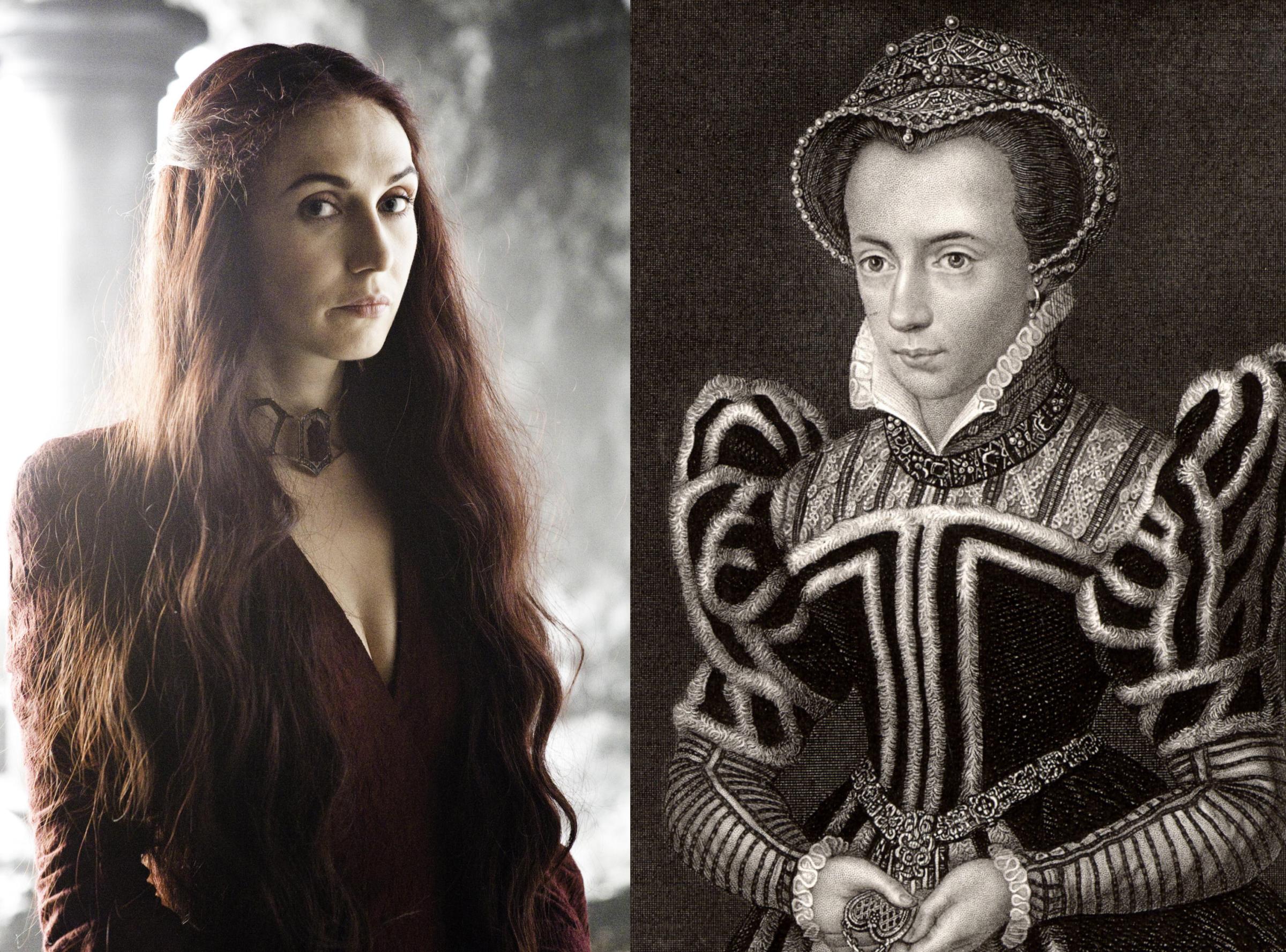
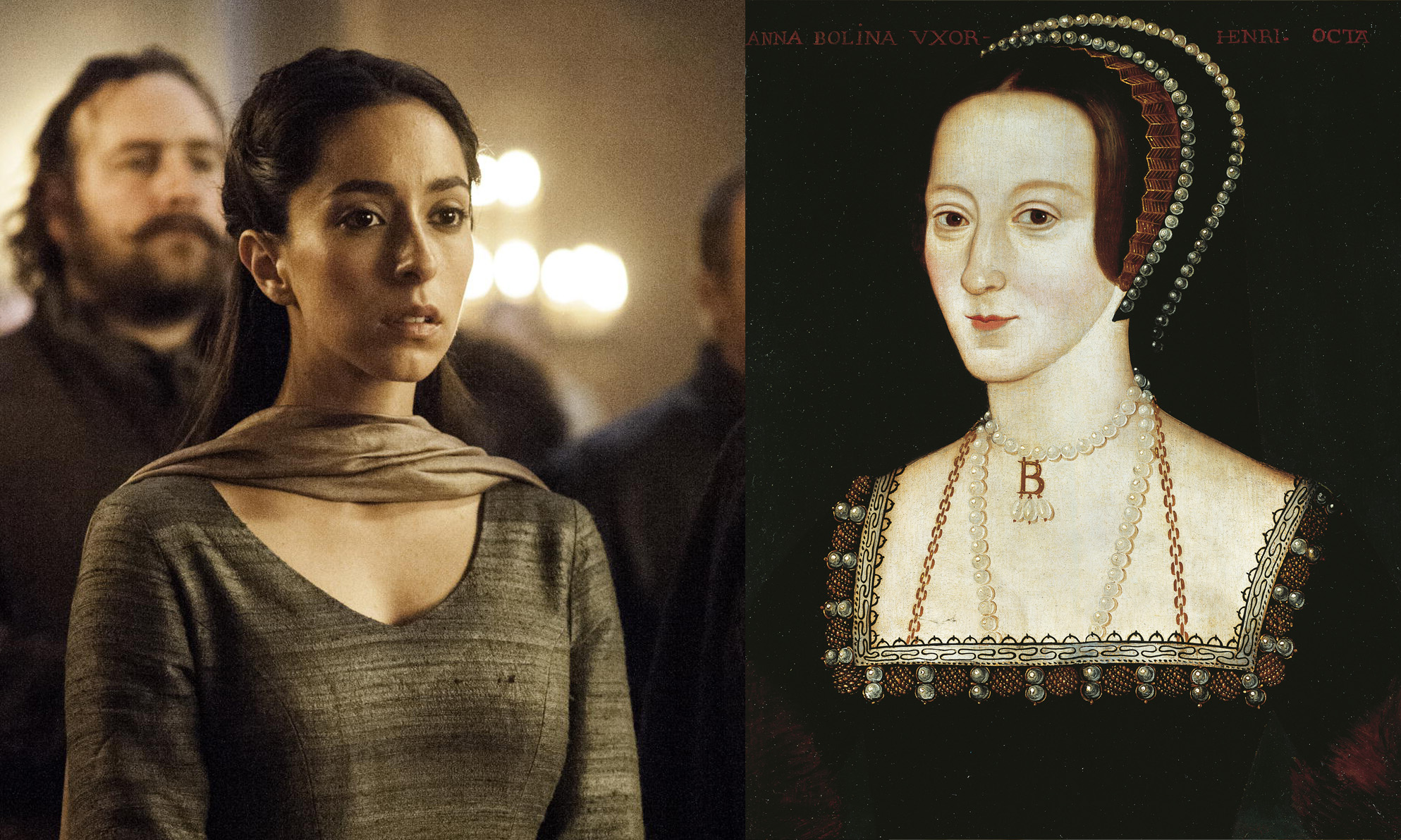
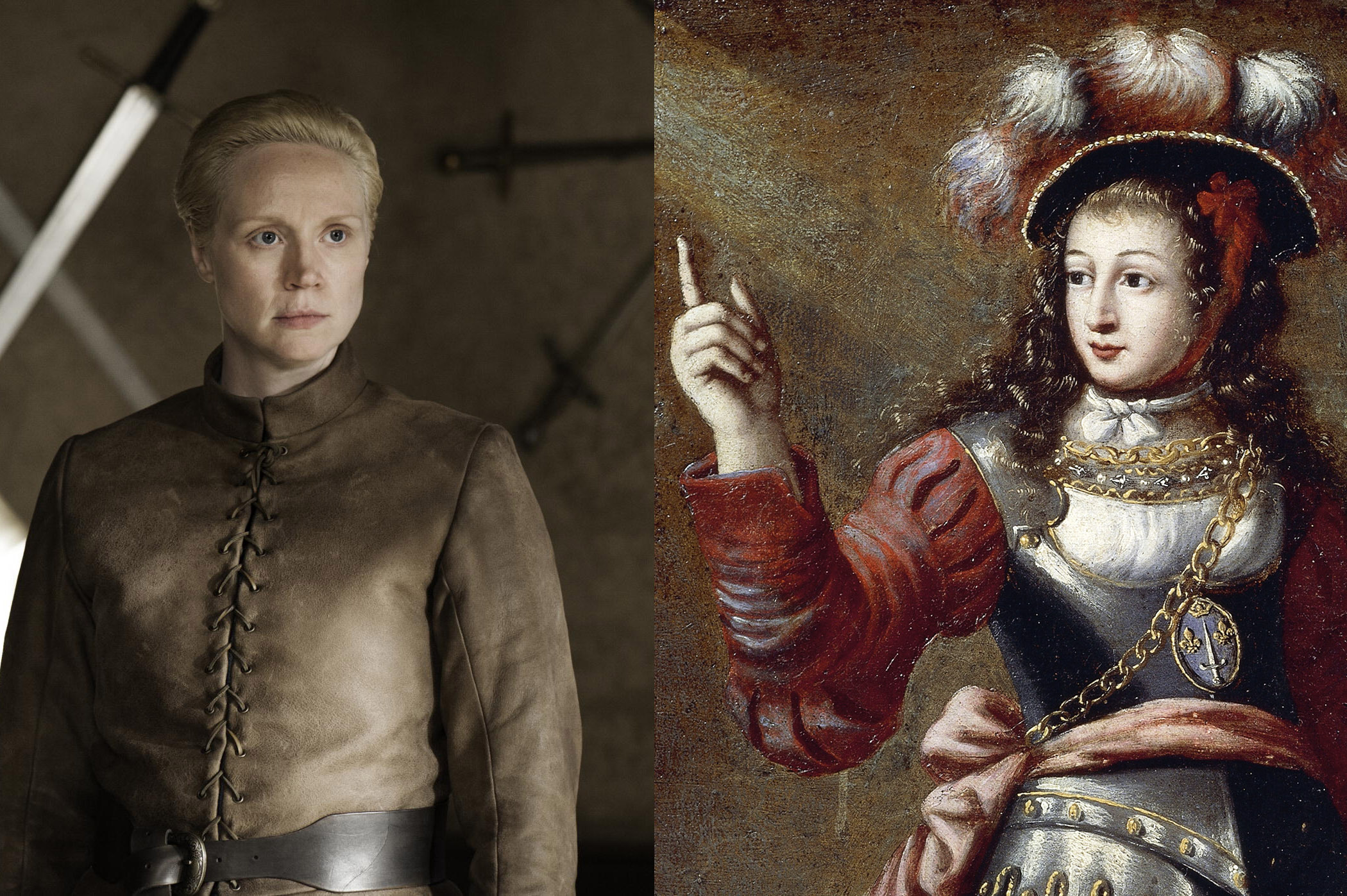
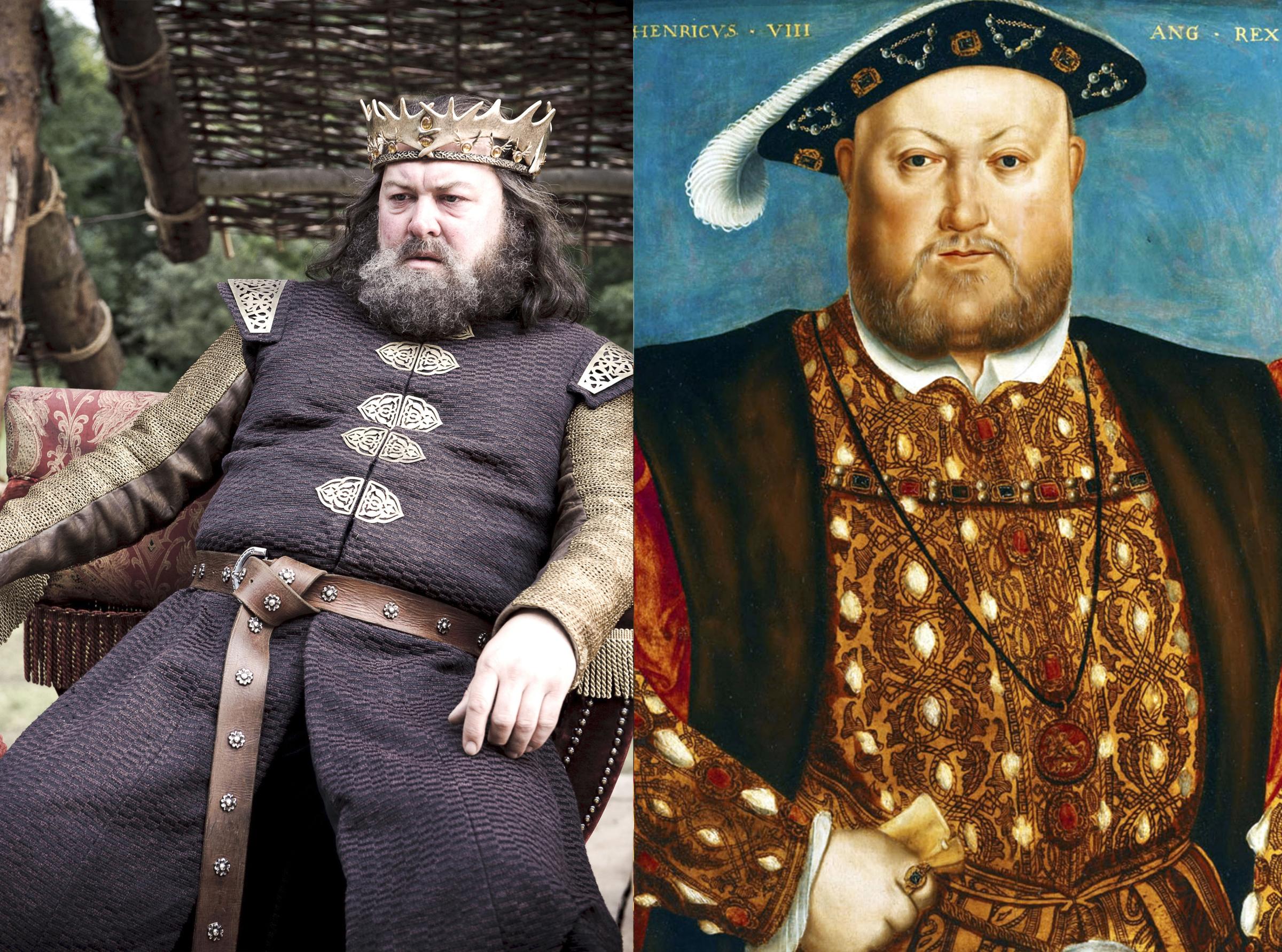

Who will defend against the Night’s King?
With Jon gone, there are few people alive who know what the Night’s King is capable of. The Night’s Watch does not subscribe to Jon’s idea that allying itself with the Wildlings is a good idea. And so the battle against the White Walkers seems more hopeless than ever with both Stannis and Jon gone, as they were the only non-Wildlings who really understood the threat. Perhaps Sam (John Bradley) can pick up the anti-White Walker mantle.
Where will Sansa and Theon go?
It’s difficult to predict what will happen to Sansa (Sophie Turner) and Theon (Alfie Allen). In excerpts from George R.R. Martin’s upcoming Winds of Winter, Theon and Jeyne Poole, who (instead of Sansa had posed as Arya and married married Ramsay) escaped together and made it to Stannis’ camp. Stannis sent Jeyne to The Wall to be reunited with her “brother” Jon. Could the series see Sansa and Theon head to The Wall? It seems that would be the logical place to go, unless they could travel to Theon’s homeland, The Iron Islands. Sansa now knows her brothers are alive, so she would likely attempt to find them, if she learns they went north of The Wall.
Will Daenerys be rescued?
It would be such a pity if Daenerys went the way of Jon Snow and didn’t survive long enough to ride her dragons into Westeros. But fans also assumed the mystery of Jon Snow’s true mother meant that he would survive until that revelation happened. Is it possible Jorah (Iain Glen) and Daario (Michiel Huisman) could use Daenerys remaining dragons to track her?
Is Meereen in good hands?
Grey Worm (Jacob Anderson), Missandei (Nathalie Emmanuel) and Tyrion (Peter Dinklage) are now in charge of Meereen while the Mother of Dragons is away. This storyline has a lot of potential, as Grey Worm and Missandei are two of the series legitimate “good guys.” Tyrion has real acumen for ruling. The question is … will the terrorist-infested city accept them?
What’s next for Arya?
Arya is now blind, after ignoring the training of the Faceless Men and killing Meryn Trant (Ian Beattie) for personal reasons. With nowhere else to go, she will presumably complete her training. If that’s the case, she would truly need to let go of her identity (no more vowing to kill Cersei and her other enemies).
Don’t forget about Bran
Bran (Isaac Hempstead Wright) and Hodor (Kristian Nairn) sat out season five, but are expected to return for season six. When viewers last saw them, they met a member of The Children, an ancient race who live beyond the Wall. They also finally made it to the three-eyed crow, and presumably have spent the last year training. When Bran returns to the show, he might have some even more impressive powers with him.
This article originally appeared on The Hollywood Reporter
Melisandre / Rasputin

If the idea of an ambitious mystic who manipulates a gullible ruler into destroying his kingdom and legacy doesn’t ring a bell, you haven’t read enough Russian history. While much of the source material for Game of Thrones comes from medieval Europe, Martin may not draw exclusively from that era. And Melisandre seems to take after Rasputin, who held great influence over Tsar Nicolas II and his wife, Alexandra, just before the Russian Revolution. Rasputin was a Russian mystic who first gained the confidence of Tsarina Alexandra and then the Tsar himself, thanks to his ability to ease the suffering of their son Alexei, who suffered from hemophilia. Just like Melisandre, Rasputin encouraged the Tsar to lead his armies in battle—in World War I, another wintry hellscape—which proved to have disastrous consequences for the Tsar. Eventually, partly because of the corrosive effect of Rasputin’s influence, the entire family was murdered in the Russian Revolution. One big difference is that Rasputin made the Tsar’s son Alexei feel better, while Melisandre condemned Stannis’ daughter Shireen to death.
Olly / Brutus
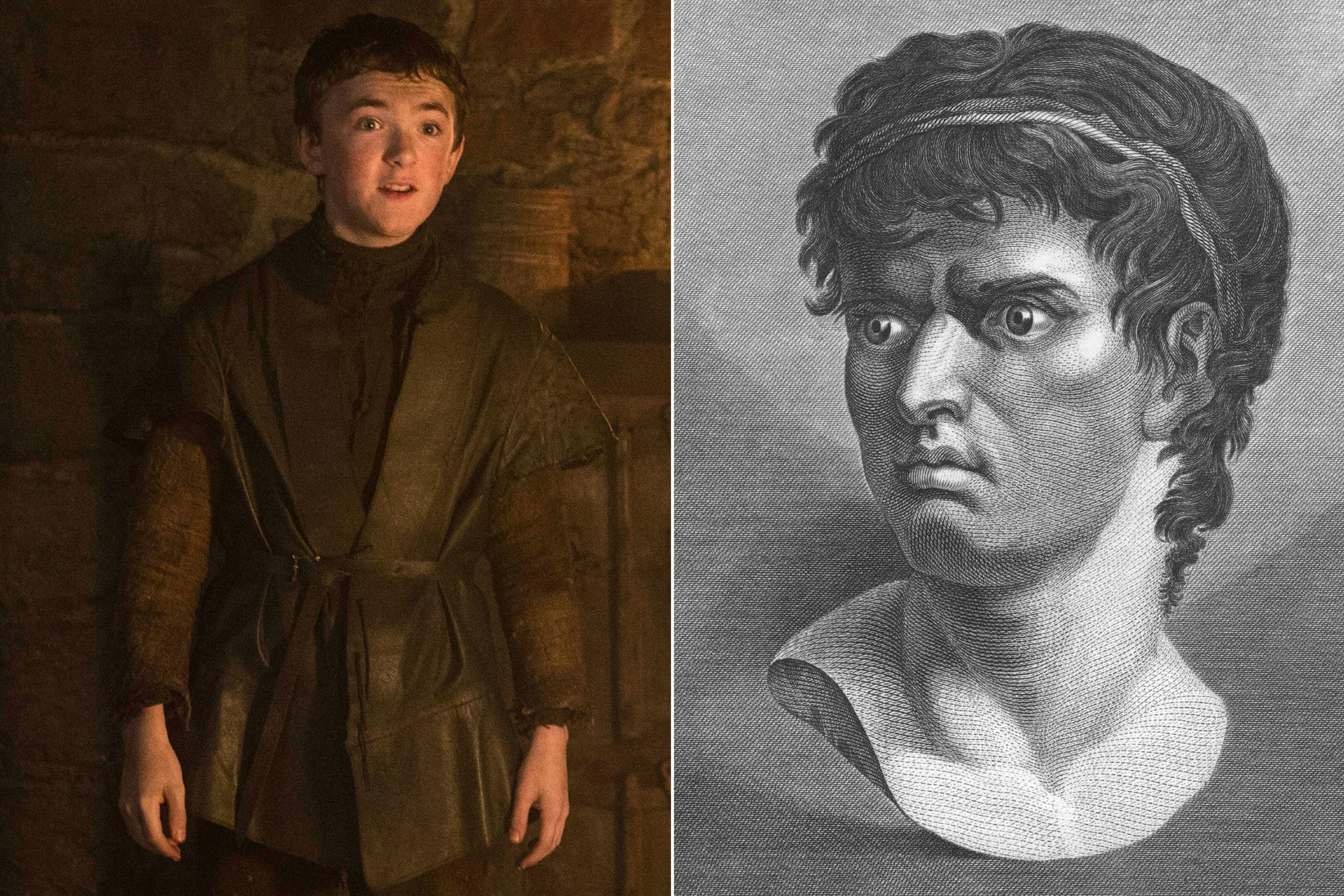
Jon Snow’s shocking murder bears a striking resemblance to Julius Caesar’s. Both were stabbed repeatedly, with each knife held by a different colleague. And just as it was for Caesar, Jon receives his final blow from one of the people he trusted most: Olly, the farm boy who watched the Wildlings slaughter his parents. Olly had been Jon’s protege, just as Brutus had been Caesar’s trusted friend (at least in Shakespeare’s retelling of the assassination) but both turned murderous after their mentors assumed too much power. In Jon’s case, it was the unilateral decision to let the Wildlings south of the Wall; in Caesar’s case, it was when he named himself “dictator in perpetuity.” No wonder everyone seems to be tweeting, “Et tu, Olly?”
Fighting Pits / Colosseum

In Mereen, and elsewhere in Slavers’ Bay, slaves fight to the death for cheering audiences and a chance to gain their freedom. In Ancient Rome, slaves and fighters fought as gladiators in the Colosseum for the same reasons. The fighting pits even look like the Colosseum, down to the subterranean chambers where the fighters wait for their turn.
Loras Tyrell / King Edward II of England

Loras Tyrell and King Edward II of England were both handsome, both considered excellent fighters, and both brought down by their scandalous affairs with men. Loras Tyrell was imprisoned by the High Sparrow for his fooling around. King Edward II was widely rumored to be romantically involved with his squire and companion Piers Gaveston, despite his marriage to Isabella of France, who is remembered as a cruel but beautiful queen. (Remember that Loras was betrothed to Cersei, who is nothing if not beautiful and cruel.) Edward II’s romance with Gaveston strained his relationship with the barons he ruled and caused tension in his marriage to Isabella–Gaveston reportedly even wore jewelry that Edward had given her. These factors, along with a series of wars and invasions, probably led to Edward’s abdication in 1327.
Valyria / Pompeii
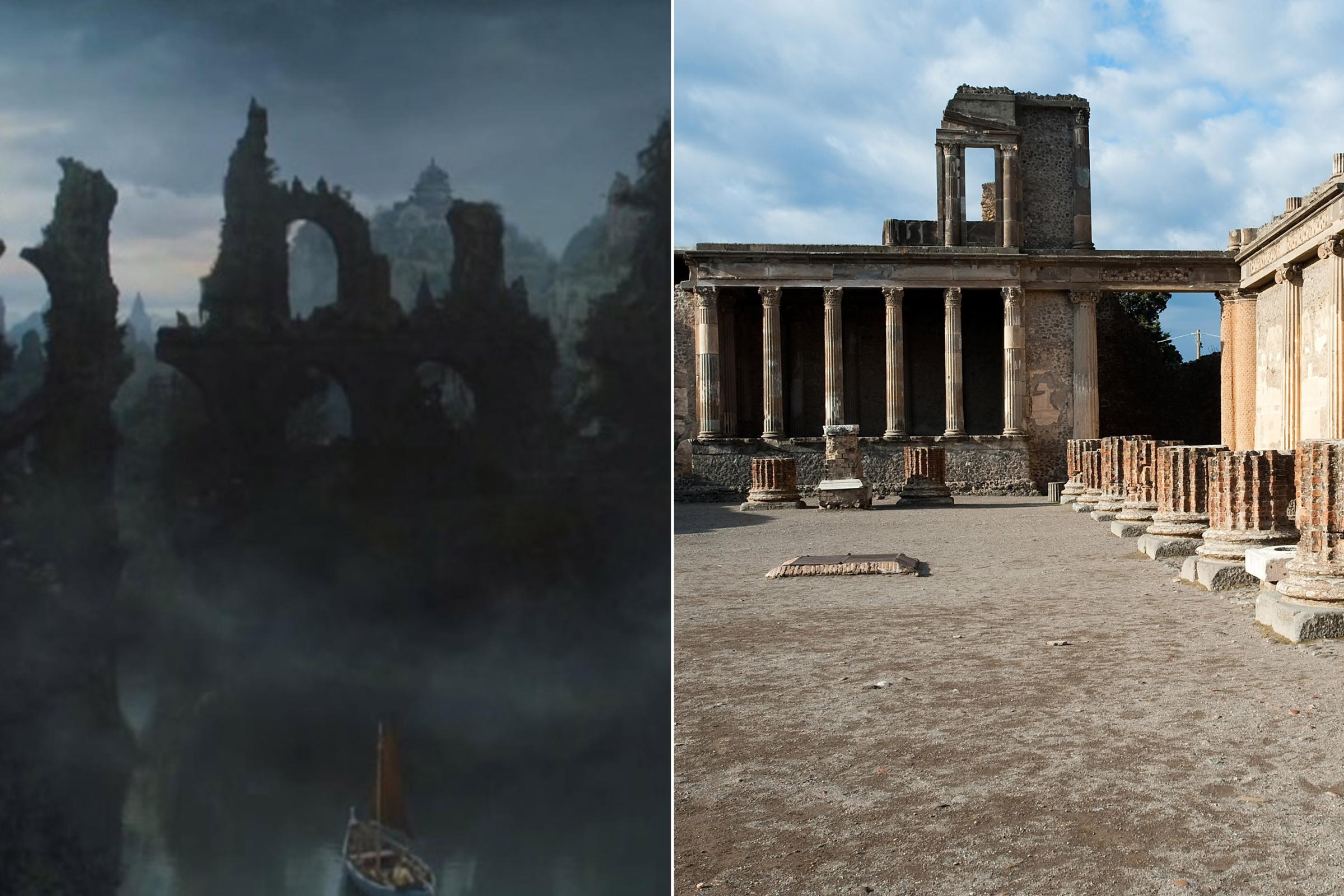
Remember when Jorah Mormont took Tyrion Lannister through that spooky ghost city full of Stone Men during the kidnapping-slash-road trip? That was Valyria, the capital of the Valyrian Freehold, once the most powerful civilization in the world and ancestral home of the Targaryens and their dragons. Valyria had been destroyed hundreds of years before the story begins, in what looks like it must have been a massive volcanic event. Tyrion recites a poem about that disaster, known as the Valyrian Doom, as they row through the ruins: “They held each other close and turned their backs upon the end / the hills that split asunder and the black that ate the skies / the flames that shot so high and hot that even dragons burned.” It’s impossible to ignore the comparison to Pompeii, an ancient Roman city that was completely destroyed when nearby Mount Vesuvius erupted, killing almost every inhabitant of the city. Even the imagery of citizens who died as they “held each other close” is eerily similar to the bodies found during the excavation of Pompeii. No dragons, though.
Shireen / Iphigenia
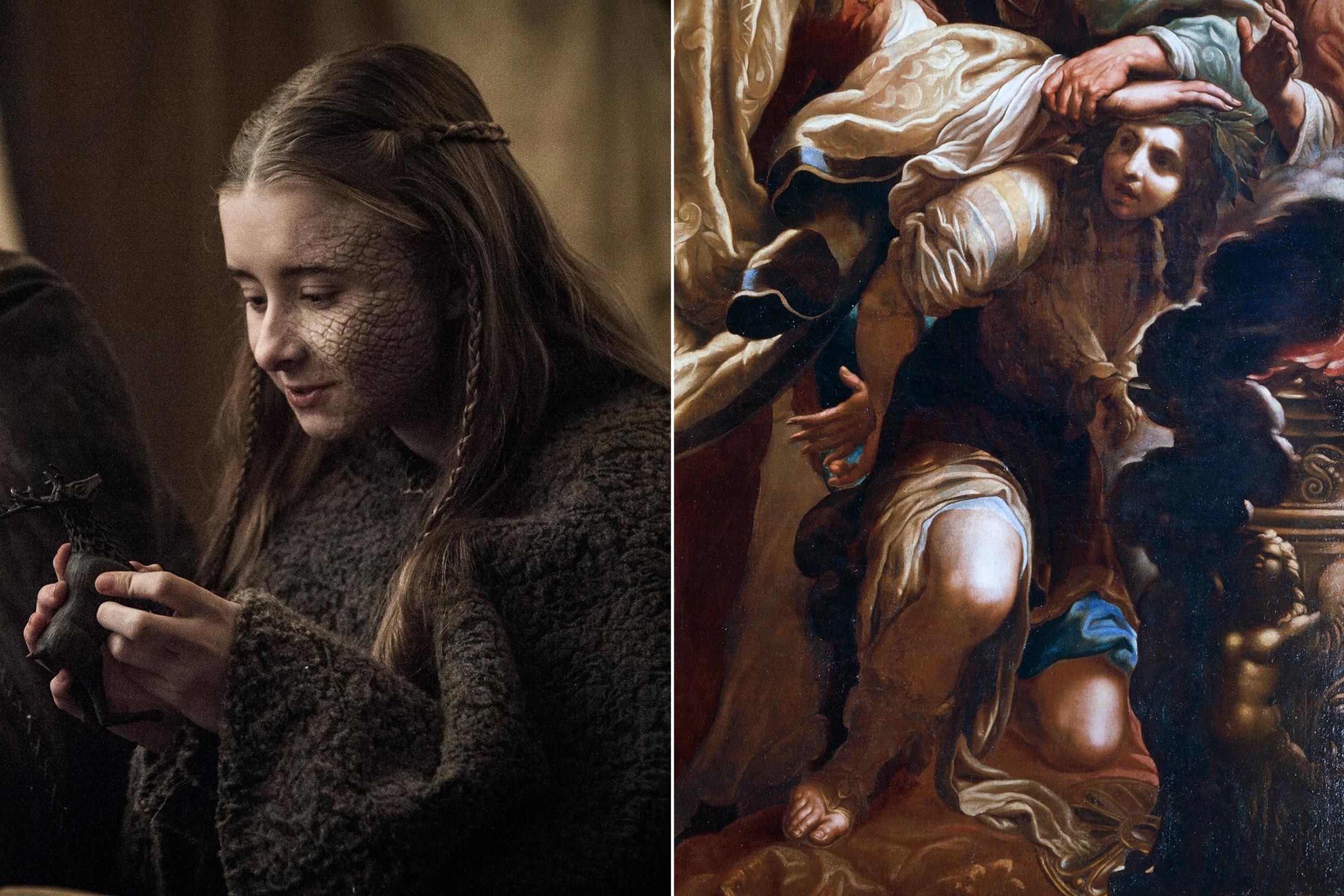
O.K., so this one’s not technically history—but you still might learn about it in history class. Stannis Baratheon isn’t the first warrior-king to sacrifice his daughter to win the favor of the gods. In Greek mythology, Agamemnon sacrifices his daughter Iphigenia in order to implore the Gods to change the wind patterns so he can sail for Troy to fight the Trojan War. Both Stannis and Agamemnon are told by prophets (or, in the case of Game of Thrones, it’s Melisandre) that the only way to ensure victory is to sacrifice their daughters, and both Shireen and Iphigenia are unaware of their fates. And in both stories, the daughter’s sacrifice leads to the demise of her mother: in Game of Thrones, Shireen’s mother Selyse hangs herself after witnessing her daughter’s death, in Greek mythology Iphigenia’s mother Clytemnestra murders Agamemnon for killing their daughter, and is then murdered by her own son as revenge.
Cersei / Jane Shore

Cersei’s hideous walk of shame in the Season 5 finale wasn’t completely made up– that kind of public humiliation was a common medieval punishment for women who were found guilty of adultery or other sexual transgressions. But Martin has said that Cersei’s particular penance was inspired by Jane Shore, the mistress of King Edward IV of England who was forced to walk the streets as a harlot after Richard III took power. Richard was likely punishing Shore for conspiring against his rise more than having sex out of wedlock, but he still forced her to walk around in her undergarments, with bare feet, in 1483. In other circumstances, medieval women found having sex with someone who wasn’t their husband were forced to do the walk naked, as Cersei did.
Read more about the link between Cersei and Jane Shore here: The True History Behind Cersei’s Game of Thrones Walk of Shame
More from The Hollywood Reporter:
More Must-Reads from TIME
- Why Trump’s Message Worked on Latino Men
- What Trump’s Win Could Mean for Housing
- The 100 Must-Read Books of 2024
- Sleep Doctors Share the 1 Tip That’s Changed Their Lives
- Column: Let’s Bring Back Romance
- What It’s Like to Have Long COVID As a Kid
- FX’s Say Nothing Is the Must-Watch Political Thriller of 2024
- Merle Bombardieri Is Helping People Make the Baby Decision
Contact us at letters@time.com